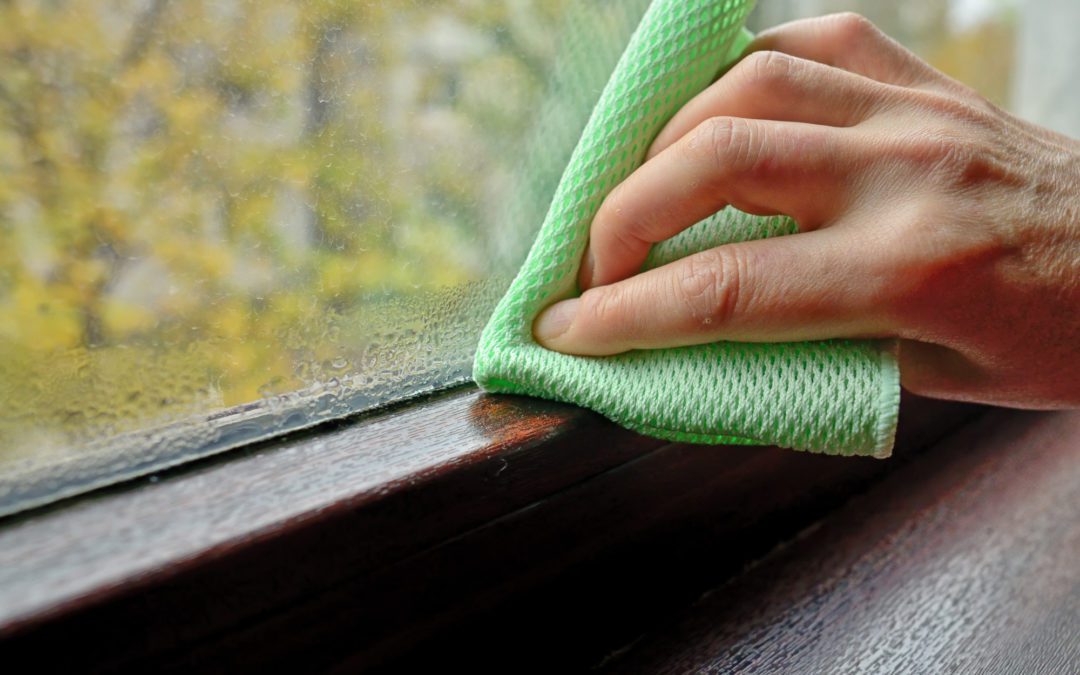In this blog post, we will be discussing the importance of humidity, its effects on our living space and how to lower the humidity in your home.
What is Humidity
Humidity is a general term for describing the amount of water vapor in the air and indicates the probability of precipitation and dew formation. The effect of humidity depends on temperature and air pressure. The same amount of water vapor is more likely to condense at lower temperatures or higher pressure than at the inverse.
Functionally, as soon as air conditioning is employed to lower the temperature within the home, humidity becomes a real problem that you’ll need to manage. The reason is that the higher outside temperature can “carry” more water vapor before it condenses into droplets than the artificially lower temperature inside the home.
Why Humidity Outside the Ideal Range is Bad
You can safely discount the notion of it raining inside your home, but a non-condensing high humidity is in general not ideal—some of the reasons being:
- Electronic devices. Every home has many electronic devices, including televisions, printers, Wi-Fi routers, and even washing machines and toasters. These devices are for the most part tolerant of humidity levels provided it is non-condensing and measures below 80% as relative humidity.
- Mold and fungus. Preferring sultry conditions, molds, mildew, and fungi will thrive in hidden places in the home that are naturally hot when humidity is not controlled, including cupboards next to stoves, along hot water pipes and inside electronic devices. These conditions can pose a serious health risk, as quite a few molds and fungi are poisonous or have poisonous spores, like Legionella pneumophila that is the cause of Legionnaires Disease.
- Health effects and concerns. Apart from the health concerns regarding fungi in the home, high humidity can also have direct health implications. People with impaired lung functionality generally find breathing difficult in high humidity environments and may have issues with pulmonary edema.
Unless living in the Sahara Desert or the more temperate zones, high humidity becomes a real problem once the home is air-conditioned. In some climatic zones, the outside humidity is already a problem. Luckily there is a simple way to bring the inside humidity of your home to comfortable levels.
Machines That Lower the Humidity in Your Home
Any quality air conditioning system also has the functionality to regulate humidity, but machines dedicated to the task also exist. Most are standalone and thus portable machines, but they are usually part of the building’s design for industrial applications.
A dehumidifier is, in theory, an extremely simple machine. There are two types – thermal condensation dehumidifiers and desiccant dehumidifiers. The latter works by water-absorbing materials extracting the water vapor from the air. These machines have specific applications in certain special conditions.
Thermal condensation dehumidifiers are the more common type. They work by having a fan draw air into the unit where it passes over a cooling unit that causes the water vapor to condense. The air is then reheated before exiting the unit. The condensed water is collected in a reservoir, which must either manually be emptied every few hours or is automatically emptied into a drain.
A dehumidifier unit requires little maintenance for optimal performance, but regular upkeep is essential. Dust is the bane of the system, which is why most units are equipped with filters. Regular cleaning and replacement of these filters are critical for free and voluminous airflow through the dehumidifier. Emptying the reservoir is an obvious chore, as most units contain a sensor that will automatically switch off the dehumidifier when the tank reaches capacity.
Where the unit connects to the drains, you must undertake monthly or even biweekly inspections of the pipes to prevent clogging. The pipes and such should also be cleaned, as the slow flow of water within a heated environment is conducive to algae and microbes that may pose a health risk. Under certain conditions, the condensing unit should also be inspected for the buildup of ice, influencing the unit’s effectiveness and possibly cause failure and electrical damage when the ice melts.
Conclusion
Living in a region where the humidity regularly passes the 80% mark necessitates a dehumidifier in the home. A superior quality air conditioning unit should be capable of doing the job, but portable units capable of removing excess water vapor from single rooms are also available. Shop around and consider aspects such as energy ratings and ultimate humidity achievable.
If a portable unit is not an option, consider contacting an experienced installation company for a workable solution and the regular maintenance of the air conditioning and dehumidifying units to lower the humidity in your home.

